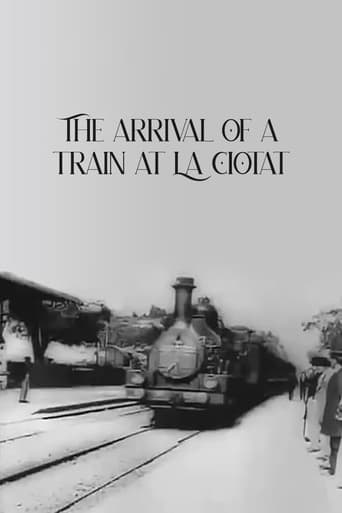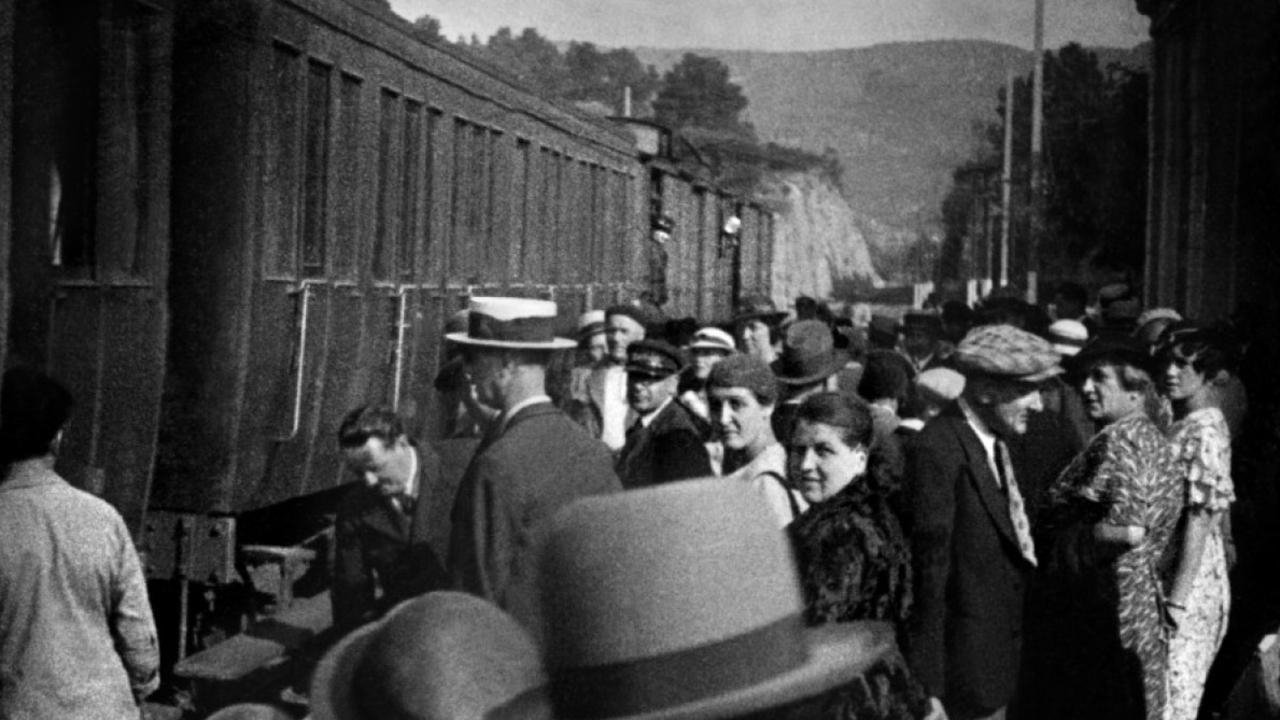grantss
A 50-second film by the Lumiere Brothers, one of the first films ever shown to a paying audience. A train arrives at La Ciotat station.Obviously this film is not significant for its plot, or action scenes or character depth. This is an iconic film in the history of cinema, significant because it was made. Only a handful of films had been made to that point and Auguste and Louis Lumiere, pioneers in the art and technology of film, used all their knowledge and expertise in making this film.It may not seem much today but we wouldn't have the blockbusters of today if it wasn't for people like Auguste and Louis Lumiere and films like 'The Arrival of a Train'.
des-47
Many people still mistakenly believe this film was the first motion picture, although it didn't form a part of the Lumière brothers' historic December 1895 Paris screening and wasn't shown until January 1896. Its fame is largely due to the urban myth associated with it, that when it was first shown, audience members screamed, ducked, fainted and ran on the supposition that the approaching train would burst through the screen into the auditorium. While these accounts have been contested, it's likely that the sheer verisimilitude of the cinematic illusion, even in flickering monochrome without synchronised sound, did have an awe-inspiring effect on early audiences.More recent films are also associated with questionable tales of extreme audience reactions, but these are usually works that set out to shock and horrify, like The Exorcist or Alien. For the Lumières, the primary interest was capturing and exhibiting slices of everyday life, though they were clearly already thinking about how to do this most dramatically. So the camera is placed as close as possible to the edge of the platform and behind the point where the front of the train will eventually stop. Thus the locomotive approaches on a trajectory that appears dangerously close to the viewer — the people awaiting the train are all standing safely back from the platform edge on the other side of the camera — and the front of it occupies the maximum possible screen space before disappearing out of the frame.Nonetheless, the people are of at least equal interest to the train itself, which comes to a stop with plenty of running time left. At the start of the film the crowd is clearly visible but static, lined up like a military parade. When the train stops everything suddenly bursts into life with embarking and disembarking passengers and greeters moving in all directions. Like factory gate scenes, arriving trains became a stock subject of early film for similar reasons — they both provided timed events that could guarantee plenty of human movement. The station platform, though, also has the opportunity to match one modern technology with another, the real movement of the railway echoed in the illusory movement of film.
Andrea Montalvo
At just under a minute, L'Arrivée d'un train à La Ciotat (1895) is one of Louis Lumiere's earliest excursions into film-making. As was formulaic with what he called "actualités," or non-narrative shorts, Louis Lumiere set up his cinematographe (a portable crank-handled camera that triples as a film projector and developer) at such an accomplished angle as to catch the arrival of a train at La Ciotat, where it captures the bustling comers-and-goers of the station who happen to stray in front of the lens, looking altogether curious, or else wary of the unfamiliar contraption. The crowd seems lively enough, but just for good measure, Lumiere's refined wife and mother-in-law can be seen actively searching for an imaginary, but eagerly expected passenger. As uninteresting as it is (and it IS, even for the most pretentious film buff), L'Arrivée d'un train à La Ciotat's historical appeal is undeniable, if not legendary. The film's effect upon its first public viewing is a well-worn myth told to enthusiastic film students by their professors. Apparently, initial audiences, unaware of film's capacity to fully imitate reality, fled in fear of the image of a train barreling down upon the screen. The French newspaper, Le courrier du centre, (July 14, 1896) alleged the advancing locomotive made "spectators draw back instinctively fearing they'd be run over by the steel monster." Nevertheless, such a widespread and instantaneous physical response seems foolish or naïve even then, especially when the projector would have been visible and the sound audible to all seated in what at that time passed as a "theater." In reality, it is far more likely that this incident was limited to a few isolated cases, and was later exaggerated to enhance its appeal and boost the film's reputation. Consequently, the commerciality of the venture succeeded with tremendous results. Over a hundred years later, not only is L'Arrivée d'un train à La Ciotat a cinematic icon, but proof of how powerful and impressionable moving pictures could (and would) become. Recommended for those with an interest in film as an art form, or for those looking for early examples of film in history.
Edgar Soberon Torchia
"Arrival of a Train at La Ciotat Station" was certainly not the first documentary ever made, but a short piece of cinema that is still fascinating because of the stories of the first time it was exhibited, when terrified spectators thought the locomotive was going to crush them; and because it contains in itself many possibilities of film expression: most notably, by the movement of people and things inside the frame, the different visual ways to register human bodies and objects: a single shot that changes in seconds from establishing shot, to medium shots and close-ups, and even suggests a travelling and a dolly in. Remade many times, including one in 1995, by Patrice Leconte, in the anthology film "Lumière et compagnie", also shot at La Ciotat.


 AD
AD
